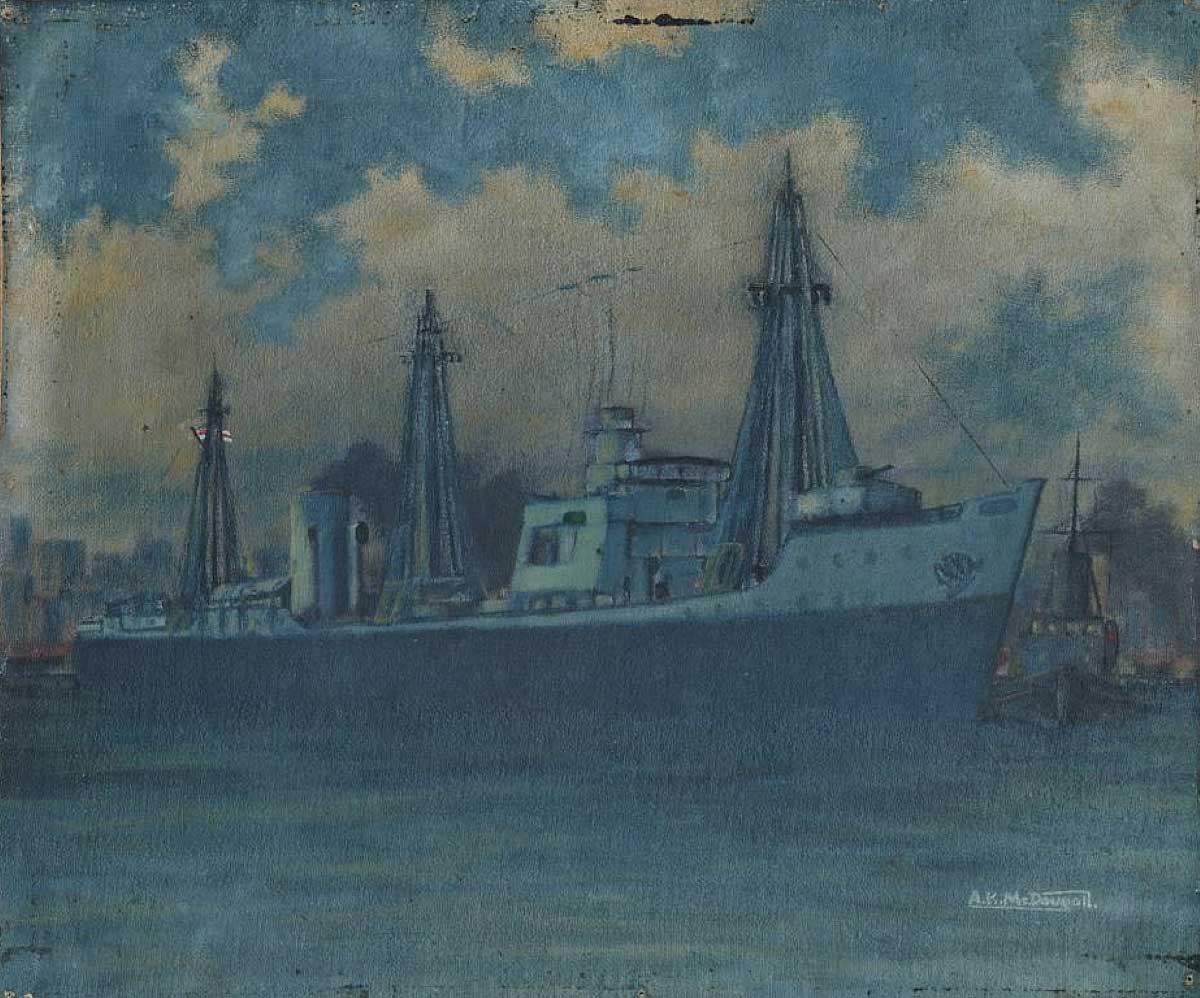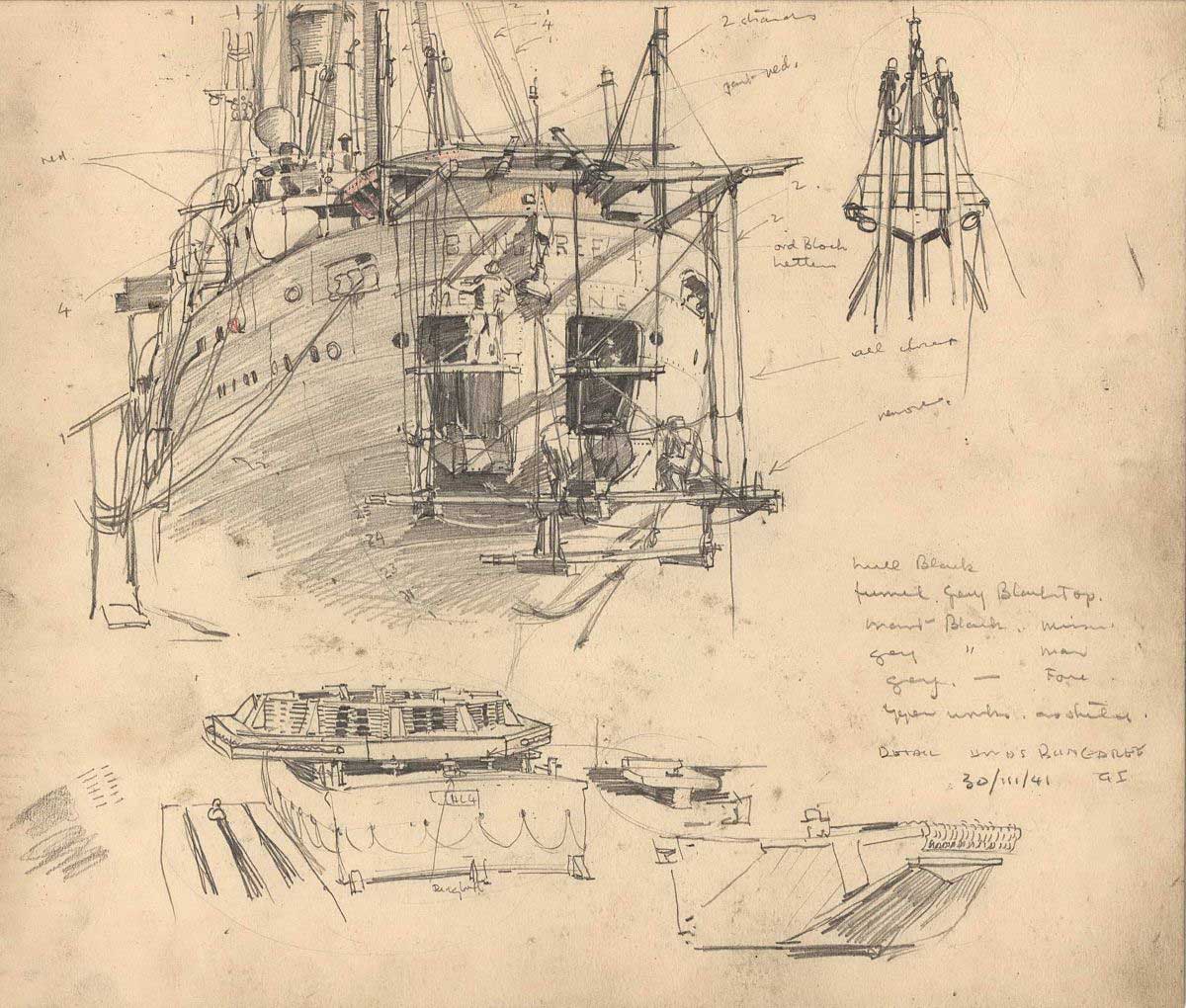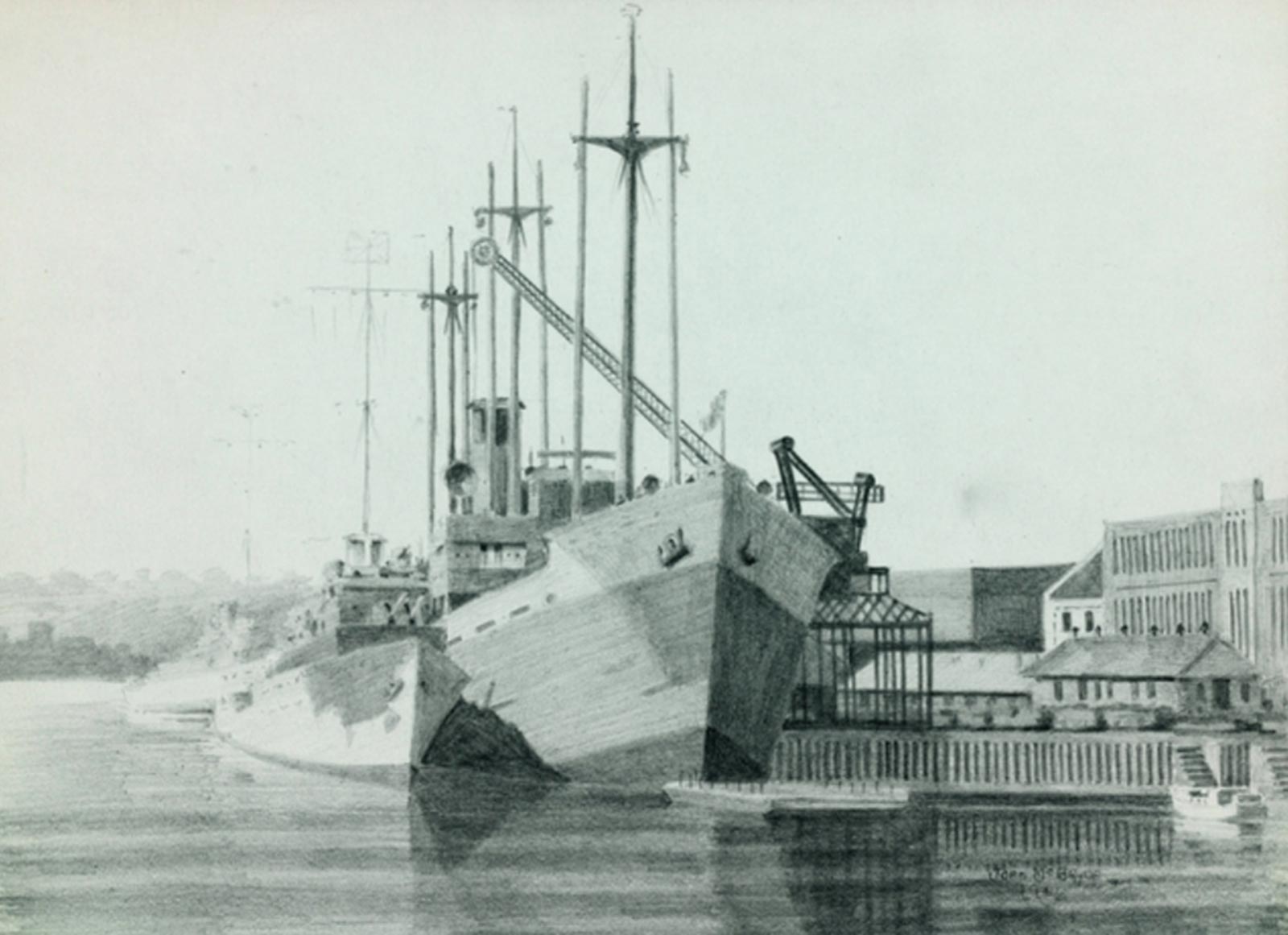HMAS Bungaree at the cruiser wharf, Garden Island

HMAS Bungaree, a former interstate freighter and wartime minelayer is to the left. Alongside the Garden Island Coal Wharf to the north is HMAS Australia, camouflaged and just back from service overseas. The Sydney based depot ship HMAS “Platypus” is in the background to the right.
- About Frank Norton
Frank was born in New Zealand but moved with his family to Sydney in 1917. From a young age Frank showed he was a gifted artist and went to study painting at the East Sydney Technical College from 1931 and worked on 'sixty milers', the coal ships running between Sydney and Newcastle.
Whilst studying, he observed and sketched the Royal Australian Navy (RAN) ships at Garden Island and upon graduating in 1936 he earned a scholarship to join and document naval ships travelling between New Zealand, Singapore, Indonesia and Western Australia. After graduation, Norton also produced work for P&O and E&A Lines, travelling to Japan and China, before arriving in England in April 1939.
With the outbreak of World War II in September 1939, Frank was unable to find work as an artist and returned to Australia in 1940. The following year Frank joined the RAN and was appointed by the Australian War Memorial (AWM) as an official war artist. In this capacity he documented RAN, and occasionally RAAF, operations in the Mediterranean and the Pacific. The collection, held by the AWM, highlights his strength in draughtsmanship and his ability for the faithful depiction of ships even during intense fighting.
At the end of the war, Frank was employed at the National Art School for the Commonwealth Reconstruction Training Scheme for ex-servicemen. Frank received leave in 1952 when he was once again appointed an official war artist to document the RAN during the Korean War (1950-1953).
After the war he resumed work at the East Sydney Technical College until 1958. He then became director of the Art Gallery of Western Australia between 1958 and 1976. As Director of the Art Gallery of Western Australia he concentrated mainly on building up the contemporary, Indigenous and sculpture collections.
He continued to sketch and paint the maritime subjects he knew so well throughout his later years and died in 1983.
- About HMAS Bungaree
In September 1940, the War Cabinet approved a naval mining policy which included the acquisition of a 3000-tonne merchant vessel as an Auxiliary Minelayer. The coastal cargo ship Bungaree was requisitioned for this task on 10 October 1940 and began conversion in Sydney. Bungaree was named for the Indigenous guide, interpreter and Aboriginal community leader who lived in the Port Jackson area (c. 1775–1830).
More reading
- Additional resources for Frank Norton
- Additional resources for HMAS Bungaree






